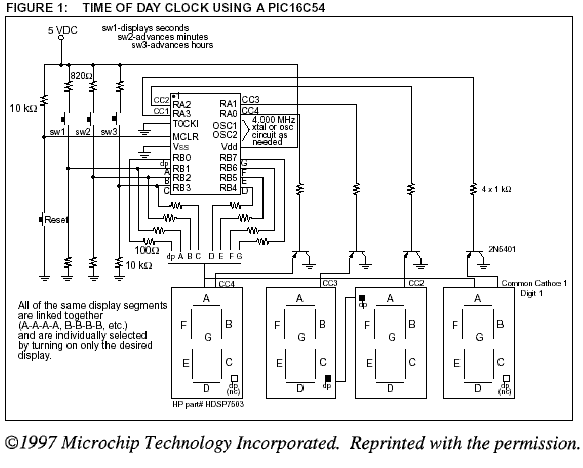Electronic Time Clock
This electronic time clock application note uses an 18 pin PIC16C54 microcontroller as its core in the display and settings of a simple 4 digits electronic clock. The four 7 segment displays are connected in a multiplexing method and each segment is sequentially by controlling the Common Cathode of each 7 segment.
The common cathodes are connected to 4 pins of PORTA of the microcontroller. When the pin in PORTA is LOW, the transistor connected to it will turn ON and that particular 7 segment is turn ON. PortB will activate the segments of that particular 7 segment that has been chosen.
By multiplexing the selection of the 7 segment sequentially, an equal brightness of all the 7 segments display will be achieved.
Multiplexing has the advantage in that it helps to reduce the number of ports needed to connect to the 7 segments. It also keep the cost of a device low as fewer parts are needed. The setback is that the display may not be as bright as if it is driven directly without multiplexing.

The 3 switches are also connected to PORTB. They are pulled down to logic "0" by using a 10k ohm resistors. Inputs of the switches are detected as logic "1" by the MCU by connecting a pull up resistor to the VDD. Pressing SW1 changes the seconds setting, SW2 the minutes setting and SW3 the hour setting.
Electronic Time Clock Home Page


New! Comments
Have your say about what you just read! Leave us a comment in the box below.